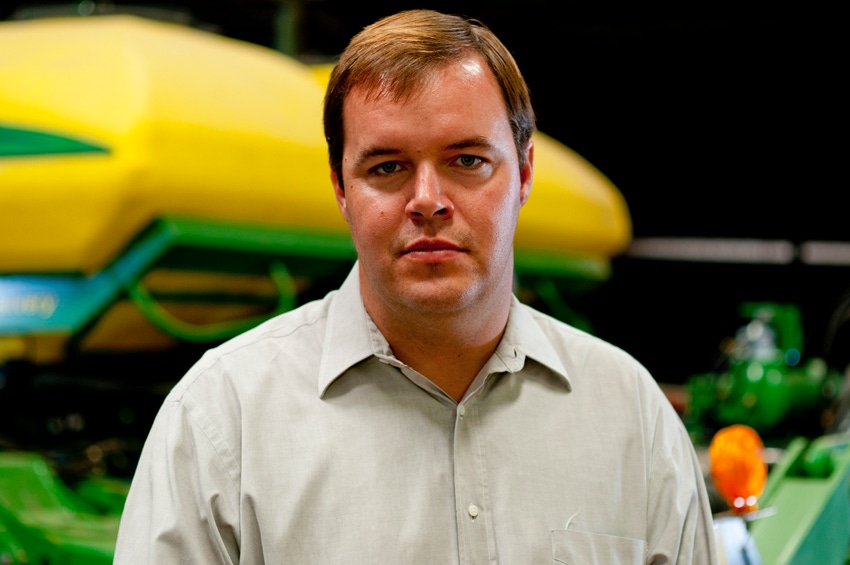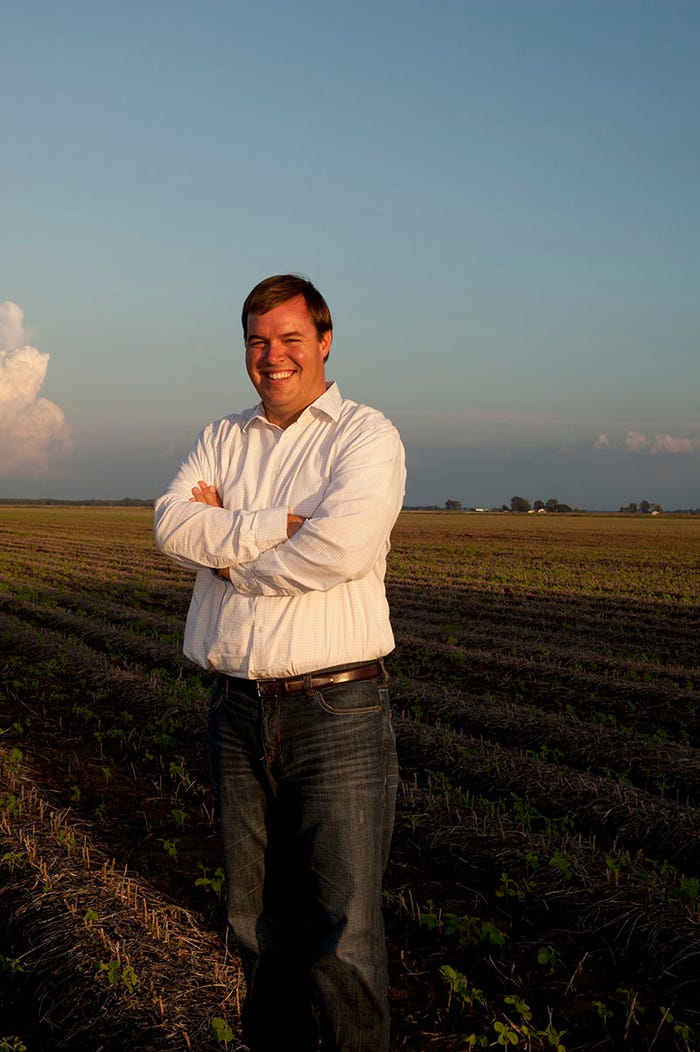February 24, 2017

Think Different.
The use of new technology, especially remote monitoring of soil moisture, is helping Jeremy Jack sustain crop yields as much as 10% above state averages as he expands his operation. As the 2013 South Regional Conservation Legacy Award winner has taken on 5,000 more acres in the past three years to nearly double his corn, soybeans, wheat, cotton, peanuts and rice acreage, he’s focused on long-term sustainability.
-------------
Jeremy Jack can turn irrigation wells on and off and check ground moisture at 45 different locations throughout his Mississippi farms. But he doesn’t have to drive over and over to each location, dig into the ground with a shovel, and decide whether to irrigate.

Now he can accomplish the same thing much more quickly sitting in his office, while he’s working in another field—or while he’s on vacation, for that matter—using his cell phone. And he can do it knowing how much moisture is in the ground at 4”, 8”, 12” and 24” depths—with monitoring records that more accurately predict when more water will be needed.
That switch to new technology is one of the major changes Silent Shade began making in 2013, the year Jack was named the Southern Region Conservation Legacy Award winner. It’s been a key to both water conservation and irrigation water efficiency as Silent Shade has grown from 7,000 acres to 12,000 acres.
“I can be on one farm and watch what’s happening on another farm,” Jack says. He now has soil moisture sensors placed at 45 of the 116 irrigation wells on his farms near Belzoni. “We always used to err on the side of too much water, to be sure our crops had enough water,” Jack says. “But now we know when that extra water isn’t necessary. It’s good business to use less water and be less wasteful.”
Save energy and water
While the soil moisture sensors help save water, Jack is also saving energy and money by converting from diesel to electric-powered wells. “Last winter we converted 30 wells, and we’re going to convert another 20 in the future,” Jack says. “We want to be all-electric; we’ll use electricity everywhere we can get a line close enough. The diesel motors cost more, operating expenses are higher, and they have a lot more maintenance. We have more options with the electric motors, too—like being able to turn them on and shut them off remotely with a cell phone.”
Jack is continuing to expand his use of aerial imagery to guide scouting and management decisions. “We variable rate everything we can, from seed to fertilizer to plant growth regulators,” he says. “We variable rate organics like litter and biosolids. We’ll even variable rate dry granular fertilizer with an airplane. What we like about that is we can use the plane in the offseason when the ground is wet and we wouldn’t be able to get in the field.”
Master plan on new farms
On new farms, the biggest problems Jack faces are low fertility and drainage issues. Before he does any field work, he creates a master plan that includes soil sampling and elevations in each field. He continues to sample soils every year on a 2.5 acre grid. “We get two paybacks from that,” he says. “We know exactly what each field needs, and no acres are lacking fertilizer.” Overhaul of drainage issues includes cleaning drainage ditches, leveling fields, and replacing drainage pipes. All but 1,000 acres of Jack’s irrigation is flood or furrow.
REACH for irrigation water recycling
Jack has also been helping develop an 800-acre “closed irrigation system” demonstration farm for the past three years. Intended to demonstrate how rainwater, nutrients, and sediments can all be held on the farm in a closed system, the farm is part of a Research and Education to Advance Conservation and Habitat (REACH) program in Mississippi.
While he’s only a little more than halfway through installation of flow meters, automatic relift pumps, reservoirs, water quality monitors, tailwater recovery ditches and other practices to recycle rainwater as irrigation water, Jack is already seeing the benefits.
“We had rice there this year,” Jack says, “and the majority of irrigation water used was reclaimed surface water from rainfall. We kept filling the reservoir with rainwater from the tailwater recovery ditch, and it was a huge water and energy savings. We’re still learning about how many gallons of water we need to collect for a reservoir, how big the pumps need to be, and some of those details. We’d like to reduce the amount of water depleting our underground aquifer—it’s been a learning experience.”
About the Author(s)
You May Also Like




